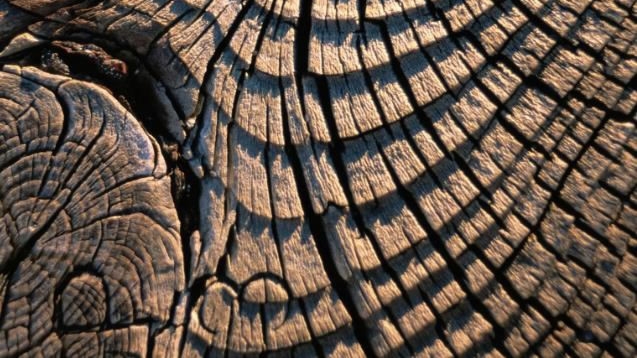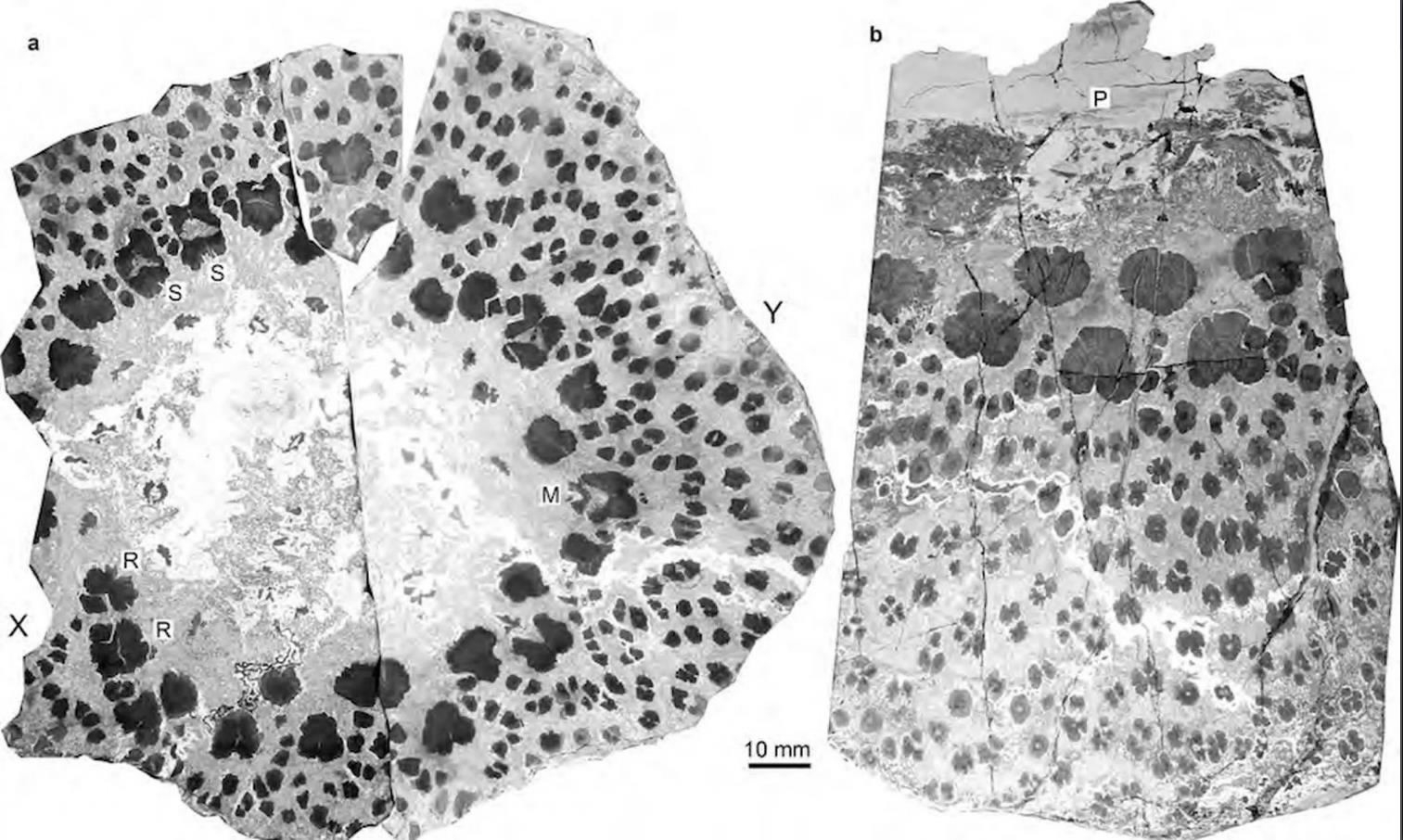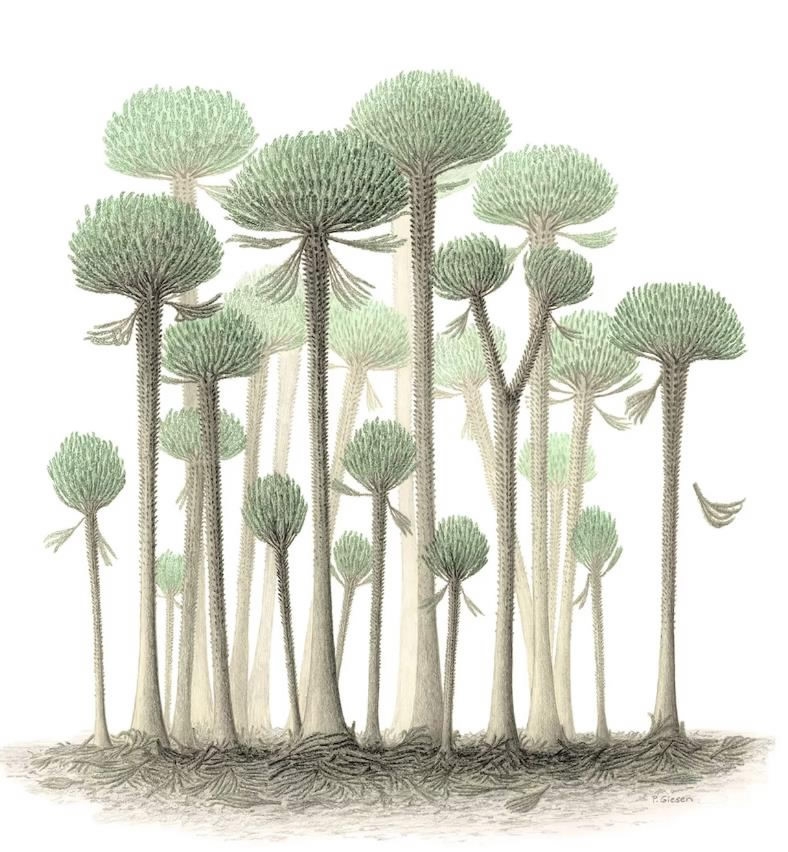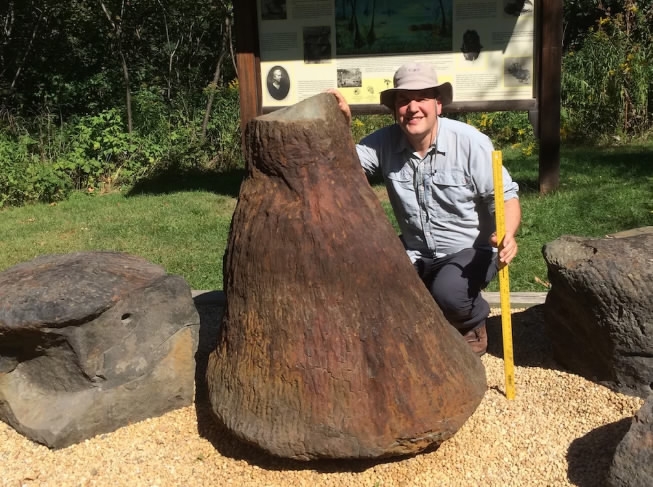
Tech & Sci
10:35, 24-Oct-2017
Fossils from the world's oldest trees reveal the prehistoric tree mystery
CGTN

Fossils from a 374-million-year-old tree, found in northwest China showed that ancient trees were more complicated than the insides of modern trees, scientists said Monday.
The study published in the journal Proceedings of the National Academy of Sciences maintains that the trunk of the ancient trees, about 70 cm in diameter, had an interconnected web of woody strands, that is much more intricate than that of the trees we see around us today.
The strands, known as xylem, are responsible for transporting water from a tree's roots to its branches and leaves. In general, the xylem forms a single cylinder, to which new growth is added in the form of rings year after year. These rings are created just under the bark. In some trees such as palms, however, xylem is formed in strands embedded in softer tissues throughout the trunk.

A cross-section of the ancient tree. Each of the black dots has its own tree ring series, unlike modern trees, which usually have just one tree ring series in their trunks./LiveScience Photo
A cross-section of the ancient tree. Each of the black dots has its own tree ring series, unlike modern trees, which usually have just one tree ring series in their trunks./LiveScience Photo
The new fossil specimen found in Xinjiang shows that the earliest trees, belonging to a group known as the cladoxylopsids, had their xylem dispersed in strands in the outer 125px of the tree trunk only, whilst the middle of the trunk was completely hollow.
The narrow strands were arranged in an organized fashion, and were interconnected with each other like a finely tuned network of water pipes, they said.
"It is a chance event to find our silicified fossil," said Hong Hexu from the Nanjing Institute of Geology and Paleontology, part of the Chinese Academy Of Sciences. "When I first saw the block in 2012, it was black and quite heavy, not looking as tree … only a few small cellular structures showing something of a plant."

Concept picture//LiveScience Photo
Concept picture//LiveScience Photo
In 2015, Xu went back to Xinjiang for more fieldwork. One year later, he found the whole trunk in a remote and open desert area, a discovery he described as "new, special and unique."
Trees in trees
The team showed that the development of the strands allowed the tree's overall growth. Unlike some trees laid down one growth ring under the bark every year, each of the hundreds of individual strands was growing their own rings, like a large collection of mini trees.
As the strands grew bigger, the volume of soft tissues between the strands increased and the diameter of the tree trunk expanded.
The new discovery showed conclusively that the connections between each of the strands would split apart in a curiously controlled and self-repairing way to accommodate the growth.

Scientist crouches next to one of the cladoxylopsid specimens found in upstate New York./LiveScience Photo
Scientist crouches next to one of the cladoxylopsid specimens found in upstate New York./LiveScience Photo
At the very bottom of the tree, there was also a peculiar mechanism at play – as the tree's diameter expanded, the woody strands rolled out from the side of the trunk at the base of the tree, forming the characteristic flat base and bulbous shape.
"There is no other tree that I know in the history of the Earth, that has ever done anything as complicated as this," said co-author Chris Berry from the Cardiff University in a statement. "The tree simultaneously ripped its skeleton apart and collapsed under its own weight, staying alive and growing upwards and outwards to become the dominant plant of its day."
"By studying these extremely rare fossils, we've gained an unprecedented insight into the anatomy of our earliest trees and the complex growth mechanisms that they employed," said Berry, who has been studying cladoxylopsids for nearly 30 years and previously helped uncovered a previously mythical fossil forest in Gilboa.
Source(s): Xinhua News Agency

SITEMAP
Copyright © 2018 CGTN. Beijing ICP prepared NO.16065310-3
Copyright © 2018 CGTN. Beijing ICP prepared NO.16065310-3